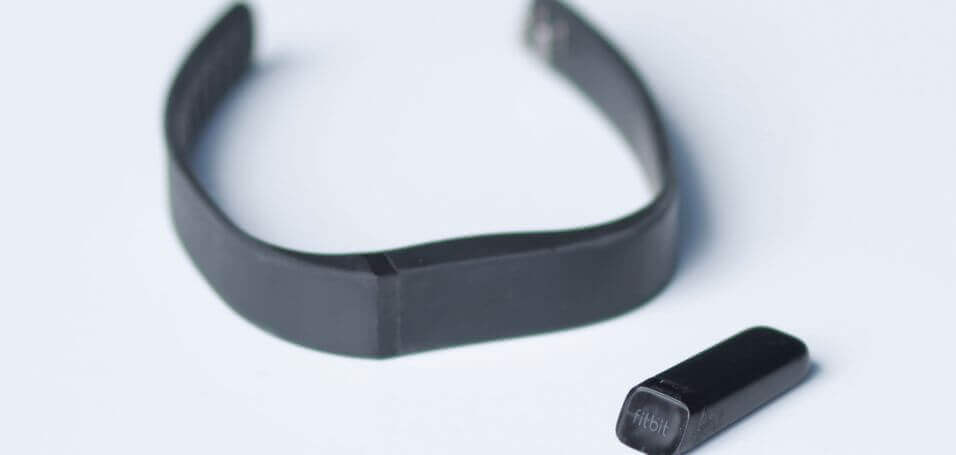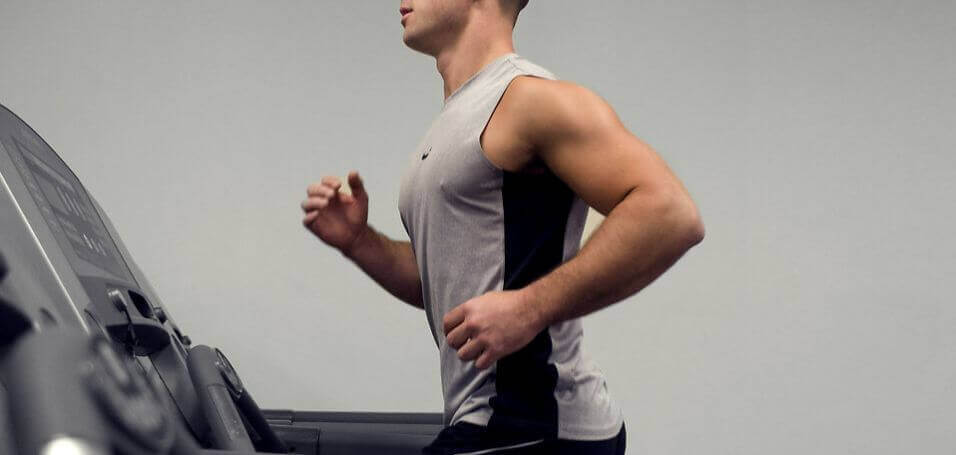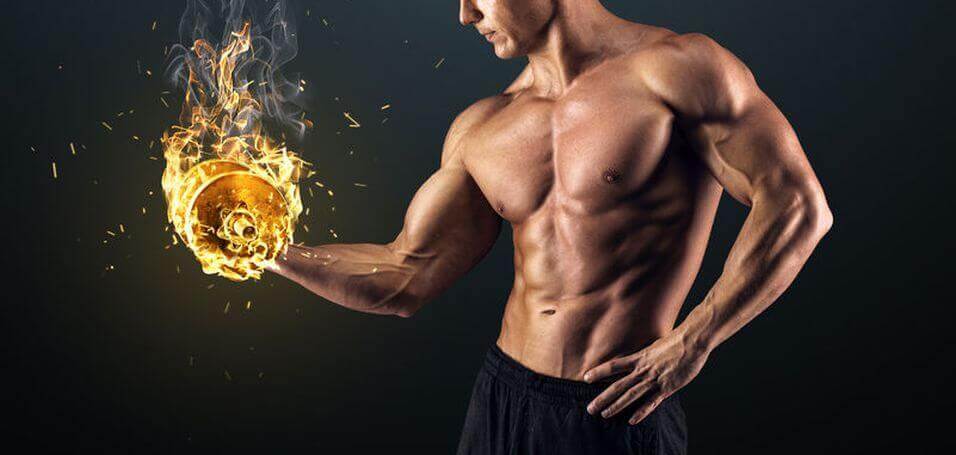If you want to lose fat or gain muscle, then you need to know how many calories you burn every day.
If you don’t, it’s going to be a lot harder than it should be, if not impossible.
But if you’re here, that’s probably not news to you. (And if you don’t, read this article first and come back.)
You just aren’t sure how to actually do it – how to easily and accurately calculate how many calories you’re burning.
You’ve probably also poked around for an answer already and discovered that you have quite a few options.
Mathematical formulas, fitness and activity trackers, workout machine readouts, and so on.
Which can you rely on, though? Which will be best for you?
Well, that’s what you’re going to learn in this article.
By the end, you’ll understand which methods of calculating calories burned work, which don’t, and which are the simplest and most practical.
- How Scientists Measure Energy Expenditure
- How Accurate Are Fitness and Activity Trackers?
- How Accurate Are Workout Machines?
- How Many Calories Do You Really Burn While Exercising?
- How Many Calories Do You Really Burn Every Day?
- The Bottom Line on How Many Calories You're Burning Every Day
Table of Contents
+Want to listen to more stuff like this? Check out my podcast!
How Scientists Measure Energy Expenditure

When we’re talking about burning calories, we’re talking about burning energy.
(And if you didn’t know that, you didn’t read this article yet!)
Well, the gold standard for measuring energy expenditure is a method called “indirect calorimetry.”
It involves measuring the amounts of oxygen (O2) and carbon dioxide (CO2) that you inhale and exhale, and from this, calculating your energy expenditure.
It’s highly accurate because there’s a direct relationship between how your body uses these gasses and how much energy it’s burning.
You see, your cells need both O2 and CO2 to create energy, which is why you need to breathe to stay alive. Only small amounts of what you inhale are used for energy generation, though – most of the gasses are exhaled.
How much of O2 and CO2 are exhaled depends on how much energy is needed (the greater the energy demand, the greater the need for them).
Thus, the difference between how much of each of these gasses are inhaled versus exhaled could be a reliable indicator of energy production. (The less that’s exhaled, the greater the energy production.)
This is eventually what scientists figured out how to measure and quantify, and the result is indirect calorimetry.
Another way that scientists can accurately measure energy expenditure is with something called “doubly labeled water.”
This involves drinking water containing special compounds that stay in the body. Researchers then measure the rate at which they’re eliminated through sweat, saliva, and urine, and use that data to compute your metabolic rate.
(The more energy you’re burning, the faster the chemicals move through your system.)
The downsides here are obvious:
- They require access to specialists.
- They’re expensive.
I doubt you’re willing to spend multiple hours and hundreds if not thousands of dollars to know how many calories you’re burning.
You need something simpler and more affordable, like a fitness or activity tracker.
How accurate are they, though?
How Accurate Are Fitness and Activity Trackers?

Fitness and activity trackers are more popular than ever because the sales pitch sounds great:
Wear a stylish band, do your thing, and know how many calories you’re burning.
Unfortunately, studies show they’re not nearly as precise as we’re being told.
Fitness trackers contain an accelerometer, which is an instrument that registers the velocity of movements.
Every time you take a step, the accelerometer wiggles produces raw data that’s run through an algorithm to estimate how many calories that movement burned.
The main problem is most of these devices can only be calibrated for one specific kind of activity, and doing anything else produces inaccurate data.
For instance, most pedometers are only good at measuring the calories you burn from walking at a certain pace. If you walk faster or slower, they become less accurate.
They’re even less accurate for running and completely useless for something like weightlifting (squatting burns a lot of energy but doesn’t involve a lot of actual physical motion–a lot less than a leisurely walk, for example).
The two most popular fitness trackers are the FitBit and the Jawbone, and a 2015 review found that, when used per the instructions, both measured energy expenditure fairly accurately, but tended to underestimate calories burned.
Thus, fitness trackers can give you a ballpark number of calories burned, but not the exact, and not necessarily a close-to-exact, number.
Studies on other activity trackers, like pedometers, have found the same thing.
They’re okay at estimating the average number of calories you burn for a particular activity, like walking, but they aren’t good for measuring much else. They can be off by 50% or more.
Most smartphones now have fitness tracking apps advertised as more accurate and convenient than dedicated fitness trackers.
The data, however, says otherwise.
Research shows that the energy expenditure measurements produced by many smartphone fitness apps are off by 30 to 50%.
Finally, let’s look at fitness trackers that use your heart rate to estimate the number of calories you burn.
As your heart rate is directly correlated with energy expenditure, these types of devices tend to be more accurate than the others we’ve discussed. And especially if they account for your body weight, age, and resting heart rate.
The problem is the most accurate of these gizmos require that you wear a strap around your chest, which is unwieldy. The ones that measure heart rate via the wrist generally produce inferior results.
So, the bottom line with fitness and activity trackers is this:
You can use them to get a rough estimate of how many calories you’re burning through exercise and other physical activity, but not a highly accurate measurement.
How Accurate Are Workout Machines?

Many people go into their cardio workouts with a target for calories burned and rely on machine readouts to know when they’ve achieved their goals.
Unfortunately, most machines overestimate the number of calories that you burn in your workouts. By a lot.
Case in point: a study conducted by researchers at the University of California-San Francisco’s Human Performance center that found that, on average…
- Stationary bicycles overestimated by 7%.
- Stair-climbers overestimated by 12%.
- Treadmills overestimated by 13%.
- Elliptical machines overestimated by 42% (ouch).
There are several reasons for these inaccuracies.
First, the algorithms used to estimate caloric expenditure differ from manufacturer to manufacturer, and some are better than others.
Then there’s the fact that weight, age, gender, and fitness level affects how much energy you burn while you exercise.
When the effort level and duration are the same, heavier people generally burn more energy than lighter people, and fitter people generally burn less than unfit.
Few machines ask for any of that information, let alone all of it, and simply work off of fixed data.
Wear and tear on the machines also matters. For example, the belts on treadmills and other machines tend to slip with age, which reduces the amount of resistance they provide (making them easier to use).
User error also factors in, with the most common mistake being leaning heavily on the handrails on the stairstepper, elliptical machine, and treadmill (especially when walking on an incline).
This lessens the amount of weight that your muscles have to move, thereby lessening the energy cost.
Another example of user error is being passive with your upper body on the elliptical machine. The caloric calculations assume vigorous pumping with the arms, so if they’re just along for the ride, the readout is going to be wrong.
How Many Calories Do You Really Burn While Exercising?

If scientific tests are inconvenient and expensive and fitness and activity trackers and workout machine readouts are hinky, what’s the best solution?
How can you figure out how many calories you’re burning through exercise and physical activity?
Well, the easiest method is a system based on what’s called a “Metabolic Equivalent of Task,” or “MET.”
Think of a MET like a calorie, but instead of measuring the amount of energy required to heat one kilogram of water one degree Celsius, it’s the amount of energy an average size person will burn while sitting still for one minute.
Different activities are assigned different MET scores.
Walking at a slow pace for a minute burns about double the amount of energy as sitting still, and thus has a MET score of 2. Vacuuming is more vigorous, so it’s listed at 3.5 METs, and so forth.
You can find the MET scores of a wide variety of physical activities in The Compendium of Physical Activities Tracking Guide.
Here’s how to use it to figure out how many calories you’re burning:
Step 1: Understand the basic MET equation.
The math used to determine caloric expenditure is simple:
Calories Burned = METs x Your Weight in Kilograms x Hours of Activity
Step 2: Find the MET value for the activity you want to measure.
Weightlifting, for example, is listed at 6 METs.
Make sure you pay attention to activity intensity as well.
Many, such as walking, have more specific entries with different MET scores. Walking up and down stars has a higher MET score than strolling around the block, for example.
Step 3: Plug the MET value into the equation.
Let’s say you weigh 80 kilograms, or about 175 pounds, and you lift weights for one hour. Here’s the equation for it:
6 METs x 80 Kilograms x 1 = 480
Thus, for every hour of weightlifting you do, you can assume you burn about 500 calories.
You may, in reality, be burning more or less energy than this in your training sessions (by resting more or less than normal, for example), but the differences will likely average out over time.
If you do multiple kinds of exercise in a workout, you can use the same process to calculate each component and then add them up for a total caloric expenditure.
Here are a few more examples of approximately how many calories a 175-pound person (gender doesn’t matter) would burn while exercising:
- Walking (2mph): 280 calories per hour
- Running (6mph): 800 calories per hour
- Swimming (moderate effort): 560 calories per hour
- Biking (moderate effort): 640 calories
How Many Calories Do You Really Burn Every Day?

Scientists refer to the total number of calories that you burn every day as your “total daily energy expenditure,” or TDEE.
For example, I’m 31 years old, 6’2 and 195 pounds, and I lift weights for about 4 hours and do high-intensity interval cardio for about 1.5 hours per week, and my TDEE is about 3,000 calories.
That means that, on average, I burn about 3,000 calories per day.
Your TDEE is comprised of your basal metabolic rate (BMR) plus additional energy burned through physical activity and the food you eat.
Let’s review each of these points separately.
1. Your basal metabolic rate is the amount of energy your body burns at rest.
It’s the minimum amount of energy it costs to stay alive.
2. When you move your body, it costs energy.
No matter how large or small or long or short an activity is, it burns energy.
3. When you eat food, it costs energy to digest and absorb.
This is known as the “thermic effect of food,” or TEF.
Research shows that TEF accounts for about 10% of total daily energy expenditure, with amounts varying based on the macronutrient composition of your diet.
When you sum the energy your body burns to stay alive (BMR) and the energy burned through physical activity and digesting and absorbing food…you arrive at your TDEE.
Now, you can get there by calculating your BMR using a good calculator, calculating the energy burned through physical activity using the MET system, and increasing the sum by 5 to 10% for TEF.
It’s a hassle, but it produces a highly accurate TDEE measurement.
There’s also a much simpler method that can produce similar results using just basic math.
It’s called the “Katch McArdle formula,” and you can learn more about it here.
In terms of which of the two methods will work best for you, I recommend the latter unless you’re very physically active (at least 10 hours of vigorous exercise per week) or your caloric expenditure fluctuates greatly from day to day (multiple hours of exercise one day, none the next, and so forth).
You should also know that simply tracking how many calories you eat every day is an easy way to learn your TDEE.
If you’re eating less than your TDEE, you’ll lose weight; if you’re eating more, you’ll gain weight; and if you’re eating right around it, your weight will stay the same.
The Bottom Line on How Many Calories You’re Burning Every Day
As I mentioned in the beginning of this article, you need to know approximately how many calories you’re burning every day if you want to improve your body composition.
There’s just no way around it.
You don’t need to obsess over accounting for every last calorie burned, though.
Remember that, in the end, you don’t need to be 100% accurate with your estimations—you just need to be accurate enough to create meal plans that work.
And that means that, ultimately, what matters most is how your body responds to what you eat.
If you’re losing weight as desired, you’re eating fewer calories than you’re burning, regardless of what the machines or math might say.
Similarly, if you’re not losing weight, you’re eating too much.
By the same token, if you’re gaining weight, you’re eating more calories than you’re burning, and if you’re not gaining or losing weight, you’re eating more or less what we’re burning.
If you let those be your lodestars, you really can’t go wrong.
What’s your take on calculating how many calories you burn every day? Have anything else to share? Let me know in the comments below!
Scientific References +
- Tappy, L. (1996). Thermic effect of food and sympathetic nervous system activity in humans. Reproduction Nutrition Development, 36(4), 391–397. https://doi.org/10.1051/rnd:19960405
- Thomas, D. M., Bouchard, C., Church, T., Slentz, C., Kraus, W. E., Redman, L. M., Martin, C. K., Silva, A. M., Vossen, M., Westerterp, K., & Heymsfield, S. B. (2012). Why do individuals not lose more weight from an exercise intervention at a defined dose? an energy balance analysis. Obesity Reviews, 13(10), 835–847. https://doi.org/10.1111/j.1467-789X.2012.01012.x
- Hiilloskorpi, H. K., Pasanen, M. E., Fogelholm, M. G., Laukkanen, R. M., & Mänttäri, A. T. (2003). Use of heart rate to predict energy expenditure from low to high activity levels. International Journal of Sports Medicine, 24(5), 332–336. https://doi.org/10.1055/s-2003-40701
- Keytel, L. R., Goedecke, J. H., Noakes, T. D., Hiiloskorpi, H., Laukkanen, R., van der Merwe, L., & Lambert, E. V. (2005). Prediction of energy expenditure from heart rate monitoring during submaximal exercise. Journal of Sports Sciences, 23(3), 289–297. https://doi.org/10.1080/02640410470001730089
- Konharn, K., Eungpinichpong, W., Promdee, K., Sangpara, P., Nongharnpitak, S., Malila, W., & Karawa, J. (2016). Validity and reliability of smartphone applications for the assessment of walking and running in normal-weight and overweight/obese young adults. Journal of Physical Activity and Health, 13(12), 1333–1340. https://doi.org/10.1123/jpah.2015-0544
- Cruz, J., Brooks, D., & Marques, A. (2017). Accuracy of piezoelectric pedometer and accelerometer step counts. Journal of Sports Medicine and Physical Fitness, 57(4), 426–433. https://doi.org/10.23736/S0022-4707.16.06177-X
- Wallen, M. P., Gomersall, S. R., Keating, S. E., Wisløff, U., & Coombes, J. S. (2016). Accuracy of heart rate watches: Implications for weight management. PLoS ONE, 11(5). https://doi.org/10.1371/journal.pone.0154420
- Evenson, K. R., Goto, M. M., & Furberg, R. D. (2015). Systematic review of the validity and reliability of consumer-wearable activity trackers. International Journal of Behavioral Nutrition and Physical Activity, 12(1), 159. https://doi.org/10.1186/s12966-015-0314-1
- Van Remoortel, H., Giavedoni, S., Raste, Y., Burtin, C., Louvaris, Z., Gimeno-Santos, E., Langer, D., Glendenning, A., Hopkinson, N. S., Vogiatzis, I., Peterson, B. T., Wilson, F., Mann, B., Rabinovich, R., Puhan, M. A., Troosters, T., Chiesi Farmaceutici, S. A., Brindicci, C., Higenbottam, T., … Damijen Erzen. (2012). Validity of activity monitors in health and chronic disease: a systematic review. In International Journal of Behavioral Nutrition and Physical Activity (Vol. 9). Int J Behav Nutr Phys Act. https://doi.org/10.1186/1479-5868-9-84
- Schoeller, D. A. (2008). Insights into energy balance from doubly labeled water. In International Journal of Obesity (Vol. 32, pp. S72–S75). Int J Obes (Lond). https://doi.org/10.1038/ijo.2008.241
- Da Rocha, E. E. M., Alves, V. G. F., & Da Fonseca, R. B. V. (2006). Indirect calorimetry: Methodology, instruments and clinical application. In Current Opinion in Clinical Nutrition and Metabolic Care (Vol. 9, Issue 3, pp. 247–256). Curr Opin Clin Nutr Metab Care. https://doi.org/10.1097/01.mco.0000222107.15548.f5










